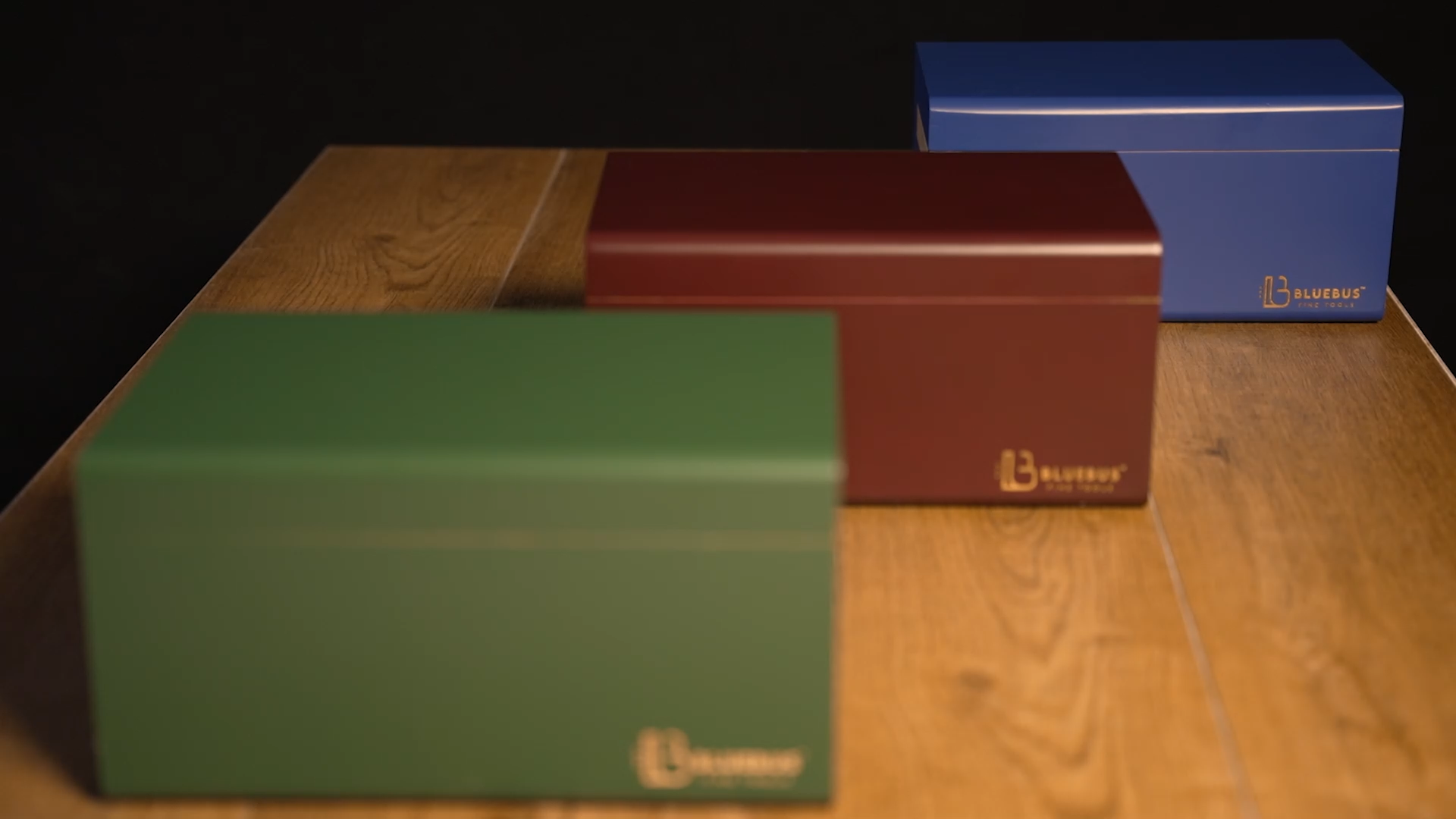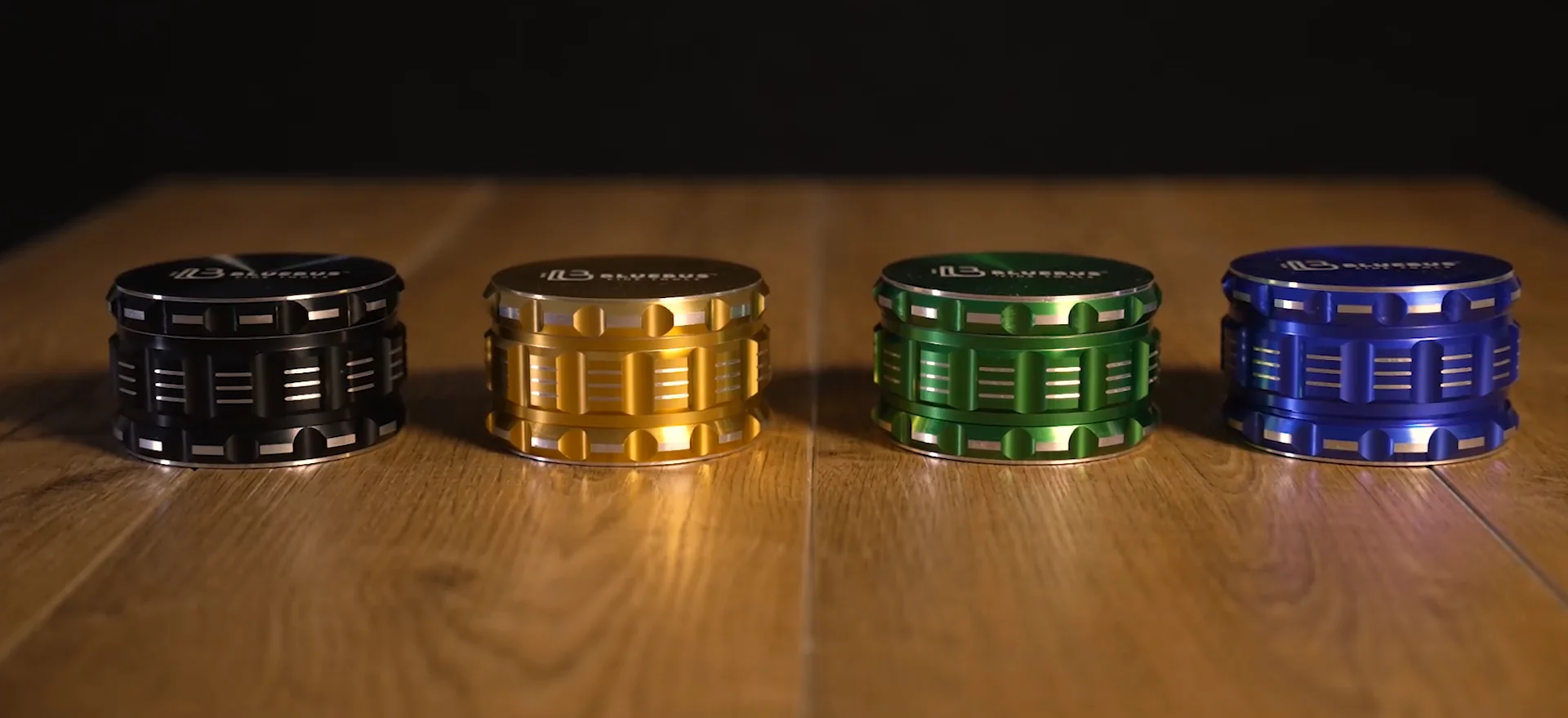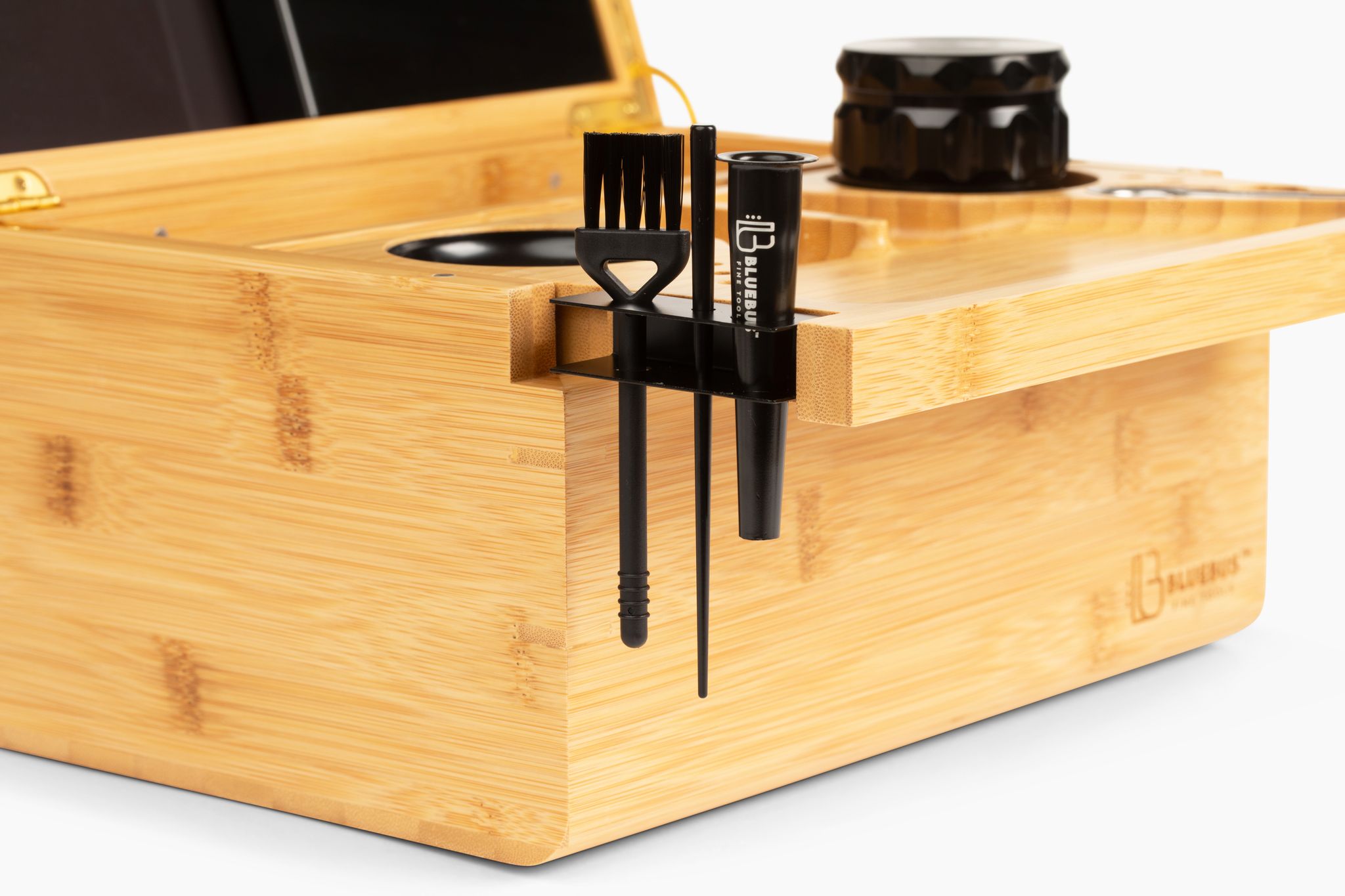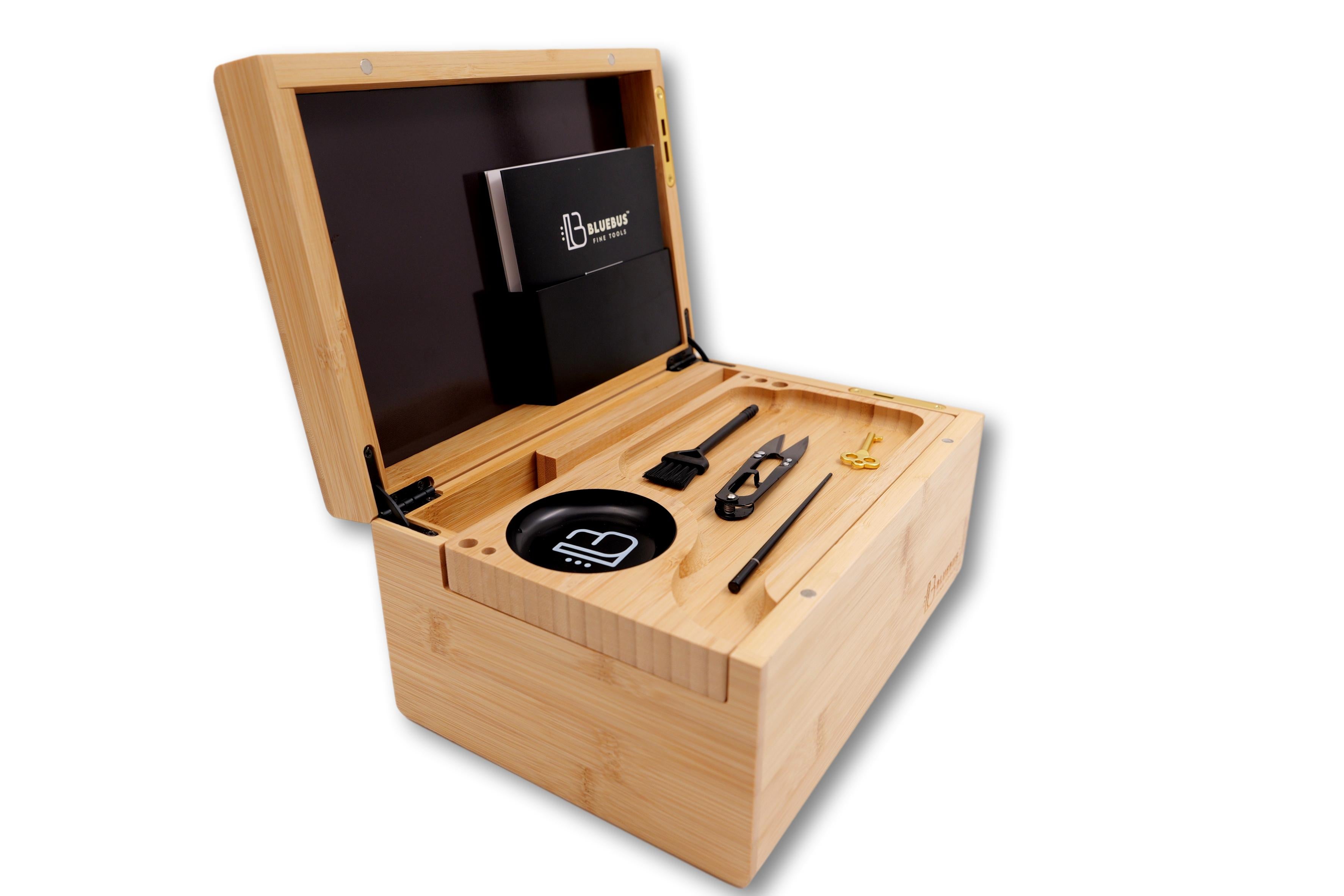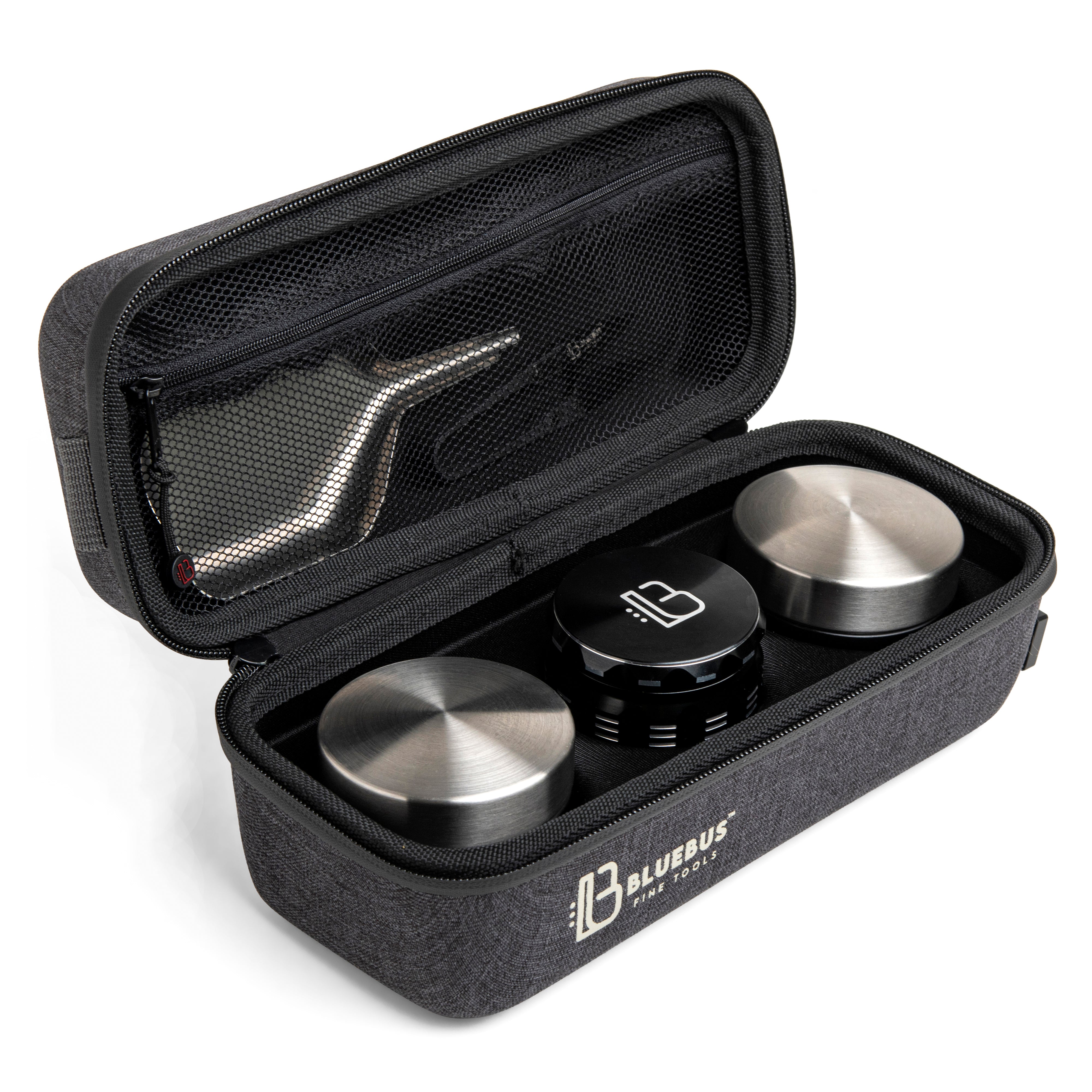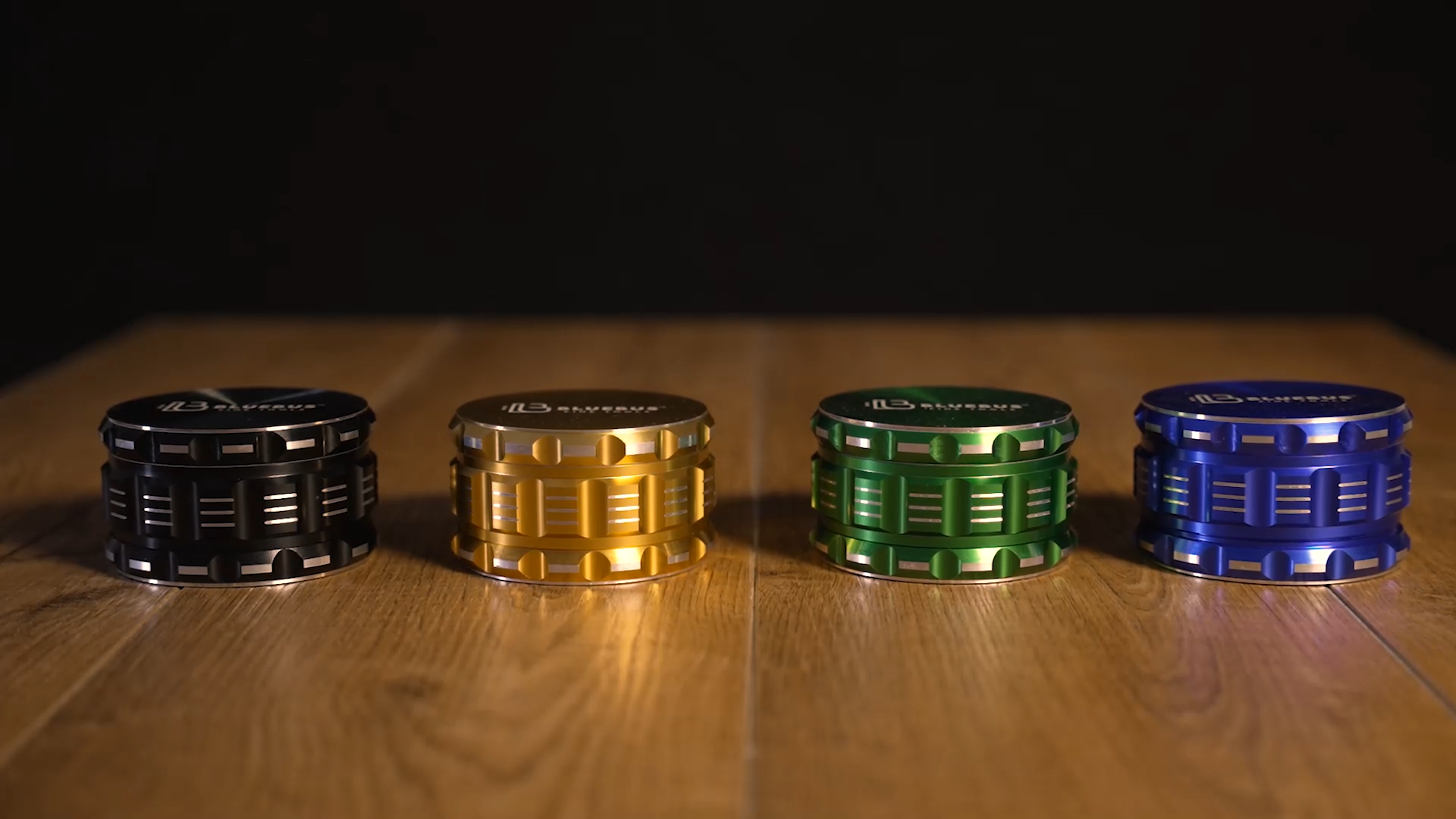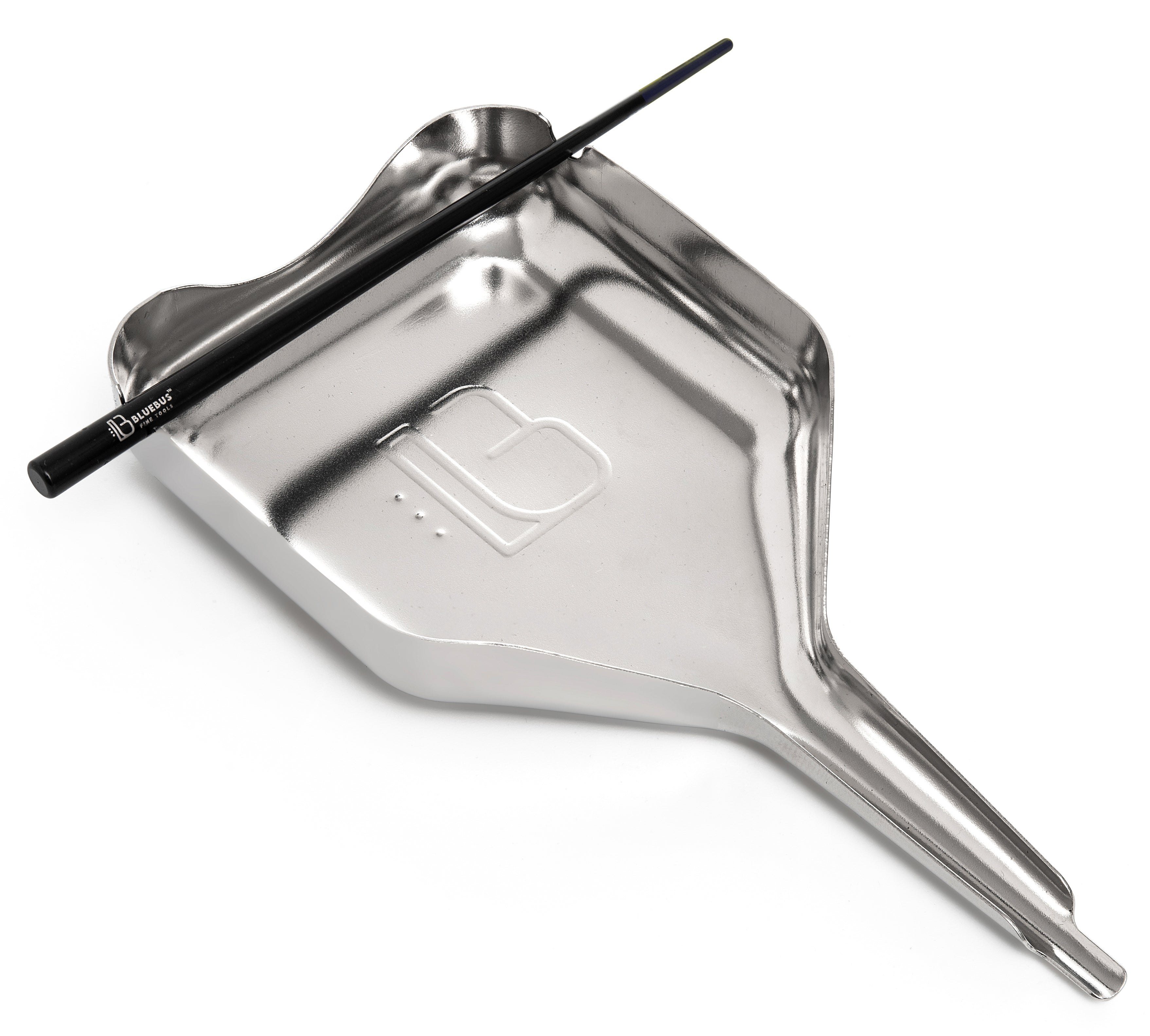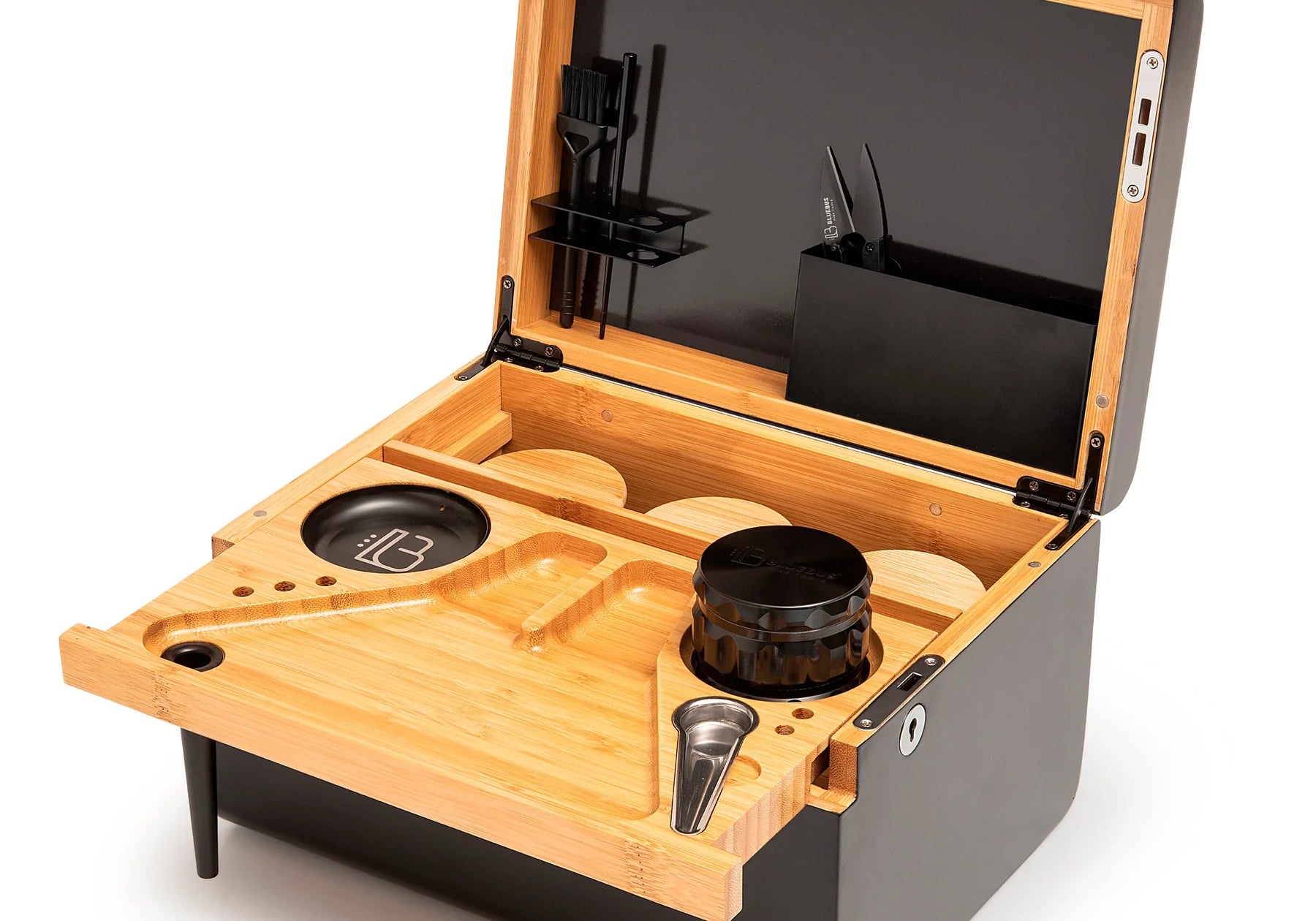Locking Stash Box Materials : Choosing the Right Material

A Comprehensive Guide to Choosing the Right Material for Your Needs
A lockable stash box has become a necessity for many people in a society where security and privacy are top priorities. A locking stash box can give you the peace of mind you need, whether you need a safe spot to put your valuables, keep medications secure, or shield your personal goods from prying eyes. But not every storage box is made equal. The longevity, security, and aesthetic appeal of your stash box are significantly influenced by the material you choose. We'll go further into the realm of locking stash box materials in this in-depth tutorial, assisting you in making an informed choice when choosing the best material for your purposes.
Understanding Locking Stash Boxes
What Is a Locking Stash Box?
Let's define a locking stash box first before delving into the world of stash box components. A lockable stash box is a container created to safeguard and protect priceless things, private documents, prescription drugs, or anything else you want to keep out of the hands of unauthorized people. These boxes vary in different shapes, sizes, and compositions, but they always have a locking mechanism that adds an added measure of security.
Why You Need One
A locking stash box is required if you want to protect your possessions. A stash box might offer a safe storage option, whether you have nosy roommates, nosy kids, or you just want to keep some things private. Additionally, if you reside in a neighborhood where burglaries or theft are an issue, a stash box might shield your possessions from theft.
Our Fingerprint locking stash box has a portable rolling tray, capacious compartments, a magnetic board, odor-proof jars, and all the other essentials for the greatest smoking experience are included in the Discovery Storage Box, which is constructed of environmentally friendly bamboo.
Please take note that the state-of-the-art lock technology allows for easy access, and the built-in backup access method guarantees that you always have access to your valuables, providing you with the ultimate reliability and peace of mind.

$219.90
Types of Locking Mechanisms
Locking stash boxes utilize different locking mechanisms to keep your items safe. The choice of locking mechanism can impact the level of security and ease of access. Common types include:
-
Keyed Locks: These require a physical key to unlock the box. They are straightforward and reliable but come with the risk of losing the key.
-
Combination Locks: Combination locks use a numerical code to unlock the box. They are convenient as there's no need to carry keys, but you must remember the code.
-
Biometric Locks: Biometric locks use fingerprint recognition to grant access. They offer quick and secure entry, but they can be pricier than other options.
-
Electronic Locks: Electronic locks often use a keypad for PIN entry. They can be programmed with multiple codes, making them ideal for shared access.
Factors to Consider When Choosing Locking Stash Box Materials
Now that you have a basic understanding of what a locking stash box is and why you might need one, let's delve into the primary factors to consider when choosing the right material for your stash box.
Durability
Wood
Wood is a classic and aesthetically pleasing choice for stash box material. It's durable and can withstand wear and tear. Depending on the type of wood used, it can be quite sturdy and long-lasting. Some of the advantages and disadvantages of using wood for your stash box include:
Advantages:
- Natural Aesthetics: Wood offers a timeless and attractive appearance that can complement various settings.
- Durability: High-quality woods are resistant to damage and can last for years.
- Customization: Wood can be easily customized with carvings, engravings, or different finishes.
Disadvantages:
- Vulnerability to Moisture: Wood can warp or rot if exposed to moisture for extended periods.
- Weight: Wooden stash boxes tend to be heavier than those made of other materials.
- Maintenance: Wood may require occasional maintenance, such as sealing or refinishing.
Metal
Metal is known for its strength and durability, making it a popular choice for stash box materials. Here are the pros and cons of using metal:
Advantages:
- Security: Metal stash boxes offer a high level of security and are resistant to tampering.
- Durability: Metal boxes can withstand rough handling and are less likely to deteriorate over time.
- Variety: Metal stash boxes come in various finishes, including stainless steel, aluminum, and brass.
Disadvantages:
- Weight: Metal boxes are typically heavier than their wooden or plastic counterparts.
- Heat Conductivity: Metals can conduct heat, potentially causing items inside to become too hot.
Plastic
Plastic stash boxes are lightweight and affordable, but they may not offer the same level of security and durability as wood or metal. Consider the following when opting for plastic:
Advantages:
- Affordability: Plastic stash boxes are often budget-friendly.
- Lightweight: They are easy to transport and handle.
- Resistance to Moisture: Unlike wood, plastic is resistant to moisture.
Disadvantages:
- Durability: Plastic boxes may not be as robust as wood or metal options.
- Security: They may not provide the same level of security against forced entry.
Security
It's essential to think about the level of protection it provides when selecting a stash box material. You'll need a substance that will survive tampering and intrusion attempts if you're storing really valuable objects or sensitive information.
Lock Types
Your stash box's lock configuration might have a big impact on security. There are many different lock kinds, as was already discussed, and each has pros and cons. Consider a biometric or electronic lock for the maximum level of protection, as they provide secure access control.
Tamper Resistance
Certain materials, like metal, are naturally more tamper-resistant than others. Metal stash boxes with reinforced corners and hinges are especially robust against tampering attempts.
Style and Aesthetics
While the primary function of a stash box is security, its appearance also matters. You want a box that not only keeps your items safe but also complements your decor. Let's explore how different materials can align with various styles:
Wood Finishes
Wooden stash boxes often come in a range of finishes, from elegant dark mahogany to rustic oak. Depending on your interior design, you can find a wood finish that seamlessly blends with your surroundings.
Metal Finishes
Metal stash boxes can be sleek and modern, with finishes like stainless steel, or they can have a more classic and antique look, such as brass or copper. The choice of finish can greatly influence the aesthetics of your space.
Customization Options
Both wood and metal stash boxes offer customization possibilities. You can have your name, initials, or a unique design engraved or etched onto the surface, adding a personalized touch to your stash box.
Wood as a Stash Box Material
Wood has a timeless appeal that many find appealing, but it's essential to understand its advantages and disadvantages before choosing it as your stash box material.
Advantages
1. Natural Aesthetics: Wooden stash boxes have a warm and inviting appearance that can enhance the ambiance of your space.
2. Durability: High-quality woods, like oak or walnut, are exceptionally durable and can last for generations.
3. Customization: Wood can be easily carved, engraved, or stained to create a unique and personalized stash box.
4. Variety: Different types of wood offer various grain patterns and colors, allowing you to choose one that suits your style.
Disadvantages
1. Vulnerability to Moisture: Wood is sensitive to moisture and can warp or rot if exposed to it for extended periods. It's essential to keep your wooden stash box in a dry environment.
2. Weight: Wooden stash boxes tend to be heavier than those made of other materials, which can make them less portable.
3. Maintenance: Depending on the wood used and the finish, wooden stash boxes may require occasional maintenance, such as sealing or refinishing, to keep them in top condition.
Best Uses and Scenarios
Wooden stash boxes are ideal for:
- Home Decor: They can serve as functional decor pieces in your living room, bedroom, or office.
- Keepsakes and Memorabilia: Wooden boxes are perfect for storing sentimental items.
- Personalized Gifts: A custom-engraved wooden stash box makes for a thoughtful and meaningful gift.
Maintenance Tips
To ensure your wooden stash box remains in excellent condition:
- Keep It Dry: Store it in a dry environment away from moisture.
- Regular Cleaning: Dust it regularly and wipe with a damp cloth when needed.
- Refinishing: Consider refinishing or sealing it every few years, depending on wear and tear.
Metal as a Stash Box Material
Metal stash boxes are known for their durability and security. Let's explore their advantages and disadvantages.
Advantages
1. Security: Metal stash boxes offer a high level of security and resistance to tampering. 2. Durability: They can withstand rough handling and are less likely to deteriorate over time. 3. Variety: Metal stash boxes come in various finishes, including stainless steel, aluminum, and brass, allowing you to choose a style that suits your preferences.
Disadvantages
1. Weight: Metal stash boxes are typically heavier than wooden or plastic options, which can affect portability. 2. Heat Conductivity: Metals can conduct heat, potentially causing items inside to become too hot.
Best Uses and Scenarios
Metal stash boxes are well-suited for:
- Valuables: For storing high-value items such as jewelry, cash, or important documents.
- Medications: Ensuring the security and accessibility of your prescription medications.
- Travel: Many metal stash boxes are compact and TSA-friendly, making them suitable for travel.
Maintenance Tips
To keep your metal stash box in top shape:
- Prevent Scratches: Avoid scratching the surface, as this can compromise the finish.
- Lubricate Locks: Periodically apply a lubricant to keep the lock mechanism working smoothly.
- Clean and Dry: Wipe the exterior clean and ensure it's dry to prevent rust or corrosion.
Plastic as a Stash Box Material
Plastic stash boxes are lightweight and budget-friendly, but they may not provide the same level of security and durability as wood or metal. Here's what you need to know.
Advantages
1. Affordability: Plastic stash boxes are often budget-friendly. 2. Lightweight: They are easy to transport and handle. 3. Resistance to Moisture: Unlike wood, plastic is resistant to moisture, making it suitable for damp environments.
Disadvantages
1. Durability: Plastic boxes may not be as robust as wood or metal options. 2. Security: They may not provide the same level of security against forced entry.
Best Uses and Scenarios
Plastic stash boxes are suitable for:
- Everyday Items: Storing everyday items like office supplies or small tools.
- Travel and Camping: Their lightweight nature makes them convenient for travel and outdoor activities.
- Temporary Storage: If you need a temporary solution for storing items, plastic stash boxes can suffice.
Maintenance Tips
To maintain your plastic stash box:
- Keep It Clean: Regularly wipe it clean with a damp cloth.
- Avoid Overloading: Plastic can warp if overloaded, so be mindful of weight limits.
- Inspect Hinges and Latches: Ensure hinges and latches are in good condition to maintain security.
Other Materials Worth Considering
While wood, metal, and plastic are the most common stash box materials, there are other options to explore. Here are a couple of alternative materials:
Leather
Leather stash boxes offer a unique blend of style and durability. They are often used for holding smaller items like jewelry or watches. Leather ages gracefully and develops a charming patina over time. However, they may not provide the same level of security as metal or wood.
Ceramic
Ceramic stash boxes can be artistic and decorative. They are ideal for showcasing small collectibles or keepsakes. While they may not be the most secure option, they add an artistic flair to any space.
Composite Materials
Some stash boxes combine multiple materials, such as metal and wood, to provide both security and aesthetics. These hybrid options offer the best of both worlds but may come at a higher price point.
Choosing the Right Locking Mechanism
The choice of lock mechanism is another critical aspect of selecting a locking stash box. Different mechanisms offer varying levels of security and convenience.
Keyed Locks
Keyed locks are straightforward and reliable. They require a physical key to unlock the box. Here are the key considerations:
-
Advantages:
- They are simple to use.
- Keys are difficult to replicate, enhancing security.
- Ideal for individuals who prefer traditional security methods.
-
Disadvantages:
- Risk of losing the key, potentially leading to a lockout situation.
- Multiple keys may be necessary if shared access is required.
Combination Locks
Combination locks rely on a numerical code for access. Here's what you need to know:
-
Advantages:
- No need to carry physical keys.
- Can be reset to a new code if needed.
- Suitable for those who can remember numerical codes easily.
-
Disadvantages:
- Forgetting the code can lead to difficulties accessing your stash box.
- Combination locks may have limited possible combinations, making them vulnerable to code guessing.
Biometric Locks
Biometric locks use fingerprint recognition technology to grant access. Consider the following:
-
Advantages:
- Quick and secure access with a simple fingerprint scan.
- Difficult for unauthorized users to bypass.
- Suitable for high-security scenarios.
-
Disadvantages:
- Biometric locks can be pricier than other options.
- May require a power source or battery replacement.
Electronic Locks
Electronic locks often use a keypad for PIN entry. They offer versatility and convenience:
-
Advantages:
- Multiple users can have their unique access codes.
- Lock settings and codes can be easily changed.
- Suitable for shared access scenarios.
-
Disadvantages:
- Electronic locks may require periodic battery replacement.
- Some models may be susceptible to electronic hacking attempts.
Choosing the right lock mechanism depends on your security needs, convenience preferences, and budget considerations. Consider how you plan to use your stash box and who will have access to it when making your decision.
Customization and Personalization Options
Adding a personal touch to your stash box can make it even more special. Both wooden and metal stash boxes offer customization possibilities.
Engraving and Personalized Designs
Many stash box manufacturers offer engraving or custom design options. You can have your name, initials, or a unique pattern etched onto the surface of the box. This not only adds a personal touch but also makes your stash box easily distinguishable.
Interior Compartments and Organization
Consider the interior layout of your stash box. Some models come with compartments and dividers, allowing you to organize your items efficiently. Whether you need separate sections for jewelry, medications, or other valuables, interior customization can enhance your stash box's functionality.
Maintenance and Care Tips for Locking Stash Boxes
Proper maintenance ensures that your locking stash box remains functional and secure for years to come. Here are some maintenance and care tips for different stash box materials:
Cleaning
Regardless of the material, regular cleaning is essential to prevent dust and dirt buildup. Use a soft cloth or a damp cloth for wood and plastic stash boxes. For metal stash boxes, you can use a metal cleaner or a mixture of mild soap and water. Be sure to dry the box thoroughly after cleaning.
Lubrication
If your stash box has moving parts, such as hinges or locks, periodic lubrication can keep them working smoothly. Apply a small amount of lubricant, such as silicone spray, to the hinges and lock mechanisms.
Repairs
Address any issues promptly. If you notice loose hinges, broken locks, or other damage, consider seeking professional repairs or replacements. Neglecting such issues can compromise the security of your stash box.
Security Tips for Using Locking Stash Boxes
While a locking stash box provides an additional layer of security, it's essential to use it wisely. Here are some security tips to consider:
Proper Placement
Place your stash box in a discreet and secure location. Avoid leaving it in plain sight, as this can attract unwanted attention. Consider hidden or inconspicuous spots within your home or office.
Concealment
For an extra layer of security, consider concealing your stash box within another object, such as a book safe, a faux electrical outlet, or a hidden compartment within furniture. These camouflage methods can thwart potential thieves.
Regular Inspections
Periodically inspect your stash box to ensure it remains in good working condition. Check the lock mechanism, hinges, and overall structural integrity. If you notice any issues, address them promptly.
Legal Considerations and Regulations
Before purchasing a locking stash box, it's essential to be aware of local laws and regulations that may apply to its use. Here are some key considerations:
Local Laws and Regulations
Some areas may have specific laws regarding the possession of certain items or substances. Be sure to research and understand the legal requirements in your locality to ensure compliance.
Travel Restrictions
If you plan to use your stash box for travel, be aware of any travel restrictions or regulations related to carrying locking containers. This is particularly important when traveling by air, as security measures at airports may vary.
Reviews and Recommendations
To assist you in your search for the perfect locking stash box, here are some recommendations and reviews of top-rated products by material:
Customer Feedback and Ratings
In addition to expert recommendations, it's always valuable to consider the feedback and ratings of customers who have purchased and used locking stash boxes. Their experiences can provide valuable insights into the performance, durability, and security of specific products.
Conclusion
In the world of locking stash boxes, the choice of material is a pivotal decision that directly impacts security, aesthetics, and functionality. As you explore the various materials available, from wood to metal to plastic, carefully consider your specific needs and preferences. Whether you prioritize natural aesthetics, maximum security, or portability, there's a locking stash box material that suits your requirements.
Remember that customization options, lock mechanisms, and maintenance play essential roles in ensuring the long-term satisfaction and security of your stash box. By following the guidance provided in this comprehensive guide, you'll be well-equipped to make an informed decision and safeguard your valuable possessions.
Read more about Locking Stash Box
- Tags: Fingerprint Stash box

